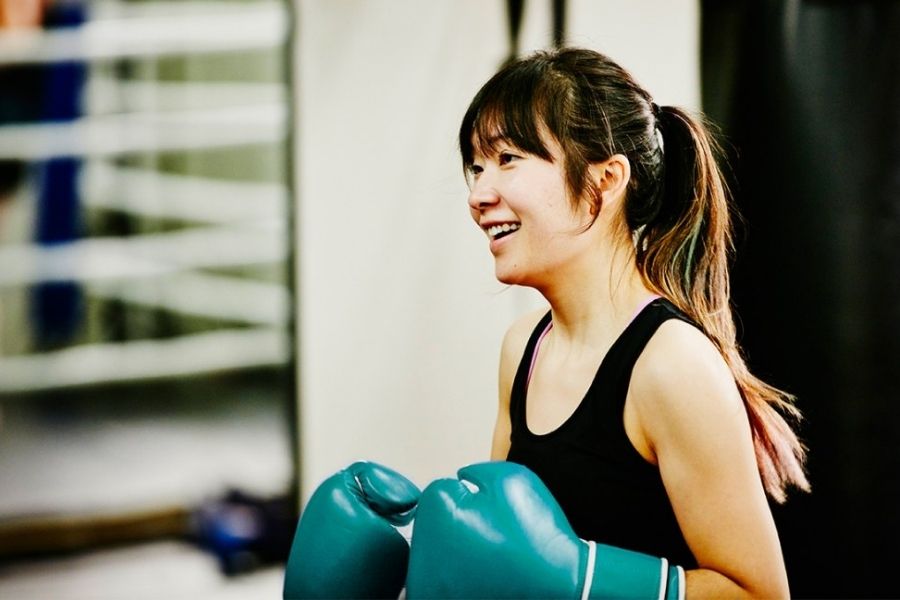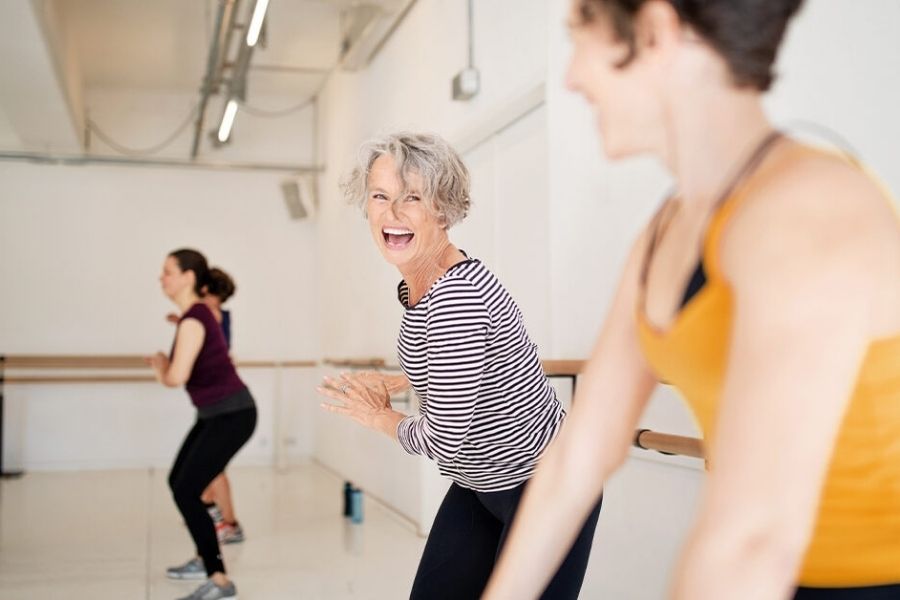Exercise is one of the best things one can do for their health. It has innumerable benefits like improving your overall health and fitness and reducing your risk for many chronic diseases. There are various categories or types of exercises.
Aerobic exercise or “cardio” exercise requires the heart’s pumping of oxygenated blood to deliver oxygen to our working muscles. These different types of aerobic exercises stimulate the breathing rate and heart rate to increase to be sustained for the exercise session.
Any activity performed for more than 2 /3 minutes with low, moderate, or high intensity is known as cardiovascular training. The different types of aerobic exercises include swimming, aerobics running, jogging, etc. Cardio workout is supported by oxygen, known as an aerobic activity.
Types Of Aerobic Exercises
1. Walking

Walking is the most regular and easy form of exercise one can practice. The benefits of walking positively keep the body healthy and fit. Walking promotes stronger leg muscles, helps lower blood pressure, and provides better cardiovascular fitness. Walking for at least 30 mins every day forms a healthy routine for your life.
2. Running Or Jogging

Running is an inexpensive exercise we can do anywhere at a time. It is beneficial in helping to improve our heart and bone health. It has an advantage over walking in that it improves heart fitness and burns kilojoules at a greater rate. It usually takes an hour for a walker to burn the same calories that a runner can burn in just 30 minutes. Jogging is slow running at a slower motion which is still one of the great types of aerobic exercise.
We know that running is a high-impact exercise. Hence, the injury risks are more than with normal walking. Few problems can happen, including a knee injury, ankle sprains, etc.
If we are generally not active, it’s important to start with regular walking first before gradually building up to jogging or running, and speak to your doctor before starting any new exercise program.
3. Swimming

It is a low-cost workout for the whole body, especially the back, shoulder, and arms muscles, and it also improves flexibility. It’s an excellent way to exercise if we are overweight, pregnant, or have joint problems as the water helps support our weight and can reduce the pressure on our joints. It is less useful for weight loss compared to walking or running. It is also not a weight-bearing exercise.
4. Aqua-aerobics Exercises

These sessions are done in a swimming pool and are available at some fitness centers. It is a kind of low-impact exercise. It’s particularly suitable for anyone pregnant, with joint problems, overweight, or unused to exercise. It is less useful for weight loss and doesn’t improve bone strength.
5. Cycling

It is an aerobic workout as well as being a low-cost form of transport. It’s efficient for improving leg strength and toning leg and buttock muscles but less stress on joints than running or walking. Spinning classes are available at some fitness centers. It is another indoor cycling option. They involve simulating different biking activities on a stationary bike—for example, cycling uphill or sprints.
6. Rowing

It is a form of low-impact which acts as an alternative to running or cycling. It can improve heart fitness and strengthen the muscles of the upper body, back, and abdomen. We can enjoy rowing outdoors by joining a rowing club or hiring a rowboat or even using a rowing machine at the gym, etc.
Whether we are rowing on water or indoors, it’s essential to use the correct technique to avoid injury, especially to the lower back. Few injuries include knee pain, tendonitis in the wrist, and blisters on your hands. If we use a rowing machine at the gym, we need to ask a qualified instructor. If you are rowing outdoors, you also need to swim and wear a life jacket and know how to row safely.
7. Boxing

Boxing is a form of aerobic workout that boosts upper body strength. Boxing classes are available in many gyms. Some classes involve sparring with a partner. We take it in turns to hold a pad or pads while the other person punches them while wearing boxing mitts. But we need hand-eye coordination to punch a pad or punching bag.
We won’t get a black eye because there’s no combat involved, but there’s a risk of injury to hands and wrists if we punch a pad or punching bag. Many gyms provide boxing mitts. We need to bring your cotton gloves to wear inside.
Aerobic or ‘cardio’ classes are available in most gyms and community centers. These classes keep us moving to music using a variety of different exercises that raise our heart rate.
The classes can vary in their intensities, and some classes are more suited to beginners than others. As with running, there’s always the chance of injury to the knees or ankles, but a good instructor should ensure that we exercise correctly to reduce the risk.
8. Dancing

Faster dancing styles such as jazz, hip hop, African and Latin American can provide an aerobic workout. It also improves flexibility and bone strength. It’s also an indoor activity that we can perform in all weather conditions. Dancing classes are available in many community centers, gyms and dance schools, etc.
Recommendation For Exercises
- The Department of Health and Human Services recommends for healthy adults:
- Do at least 150 minutes of moderate aerobic activity or 75 minutes of intense aerobic exercise per week, or a combination of moderate and vigorous activity.
- The guidelines suggest that we must spread out this exercise throughout the week.
- Moderate level aerobic activity includes brisk walking or swimming, while intense aerobic exercise includes running, swimming, playing sports like football and basketball, etc.
- Try aiming for at least 30 minutes of moderate physical activity every day. If we want to lose weight, maintain weight loss, gain more health and fitness benefits, or meet specific fitness goals, work to increase our activity even more.
- For example, we can try to aim for 60 minutes or more moderate physical activity a day.
- Some people debate that we can get an effective and efficient workout in half an hour if we use the time wisely, but if we want to make real progress, we should be working out for 45 minutes to an hour at max.
- Spending 10 minutes warming up and mobilizing your body, 30-40 minutes weight training, and five-10 minutes cooling down and stretching,
- Half-hour workouts can be useful for conditioning sessions or even interval training.
Remember This
For everyone who trains regularly, having 7/8 hours of sleep on average each night is very important. After the training, the body then grows stronger, starts burning fat, and rebuilding damaged muscle tissue when we are sleeping. So, if we don’t get enough sleep, we will be indeed be inviting trouble.
Read Also: 11 Benefits Of Aerobic Exercises







